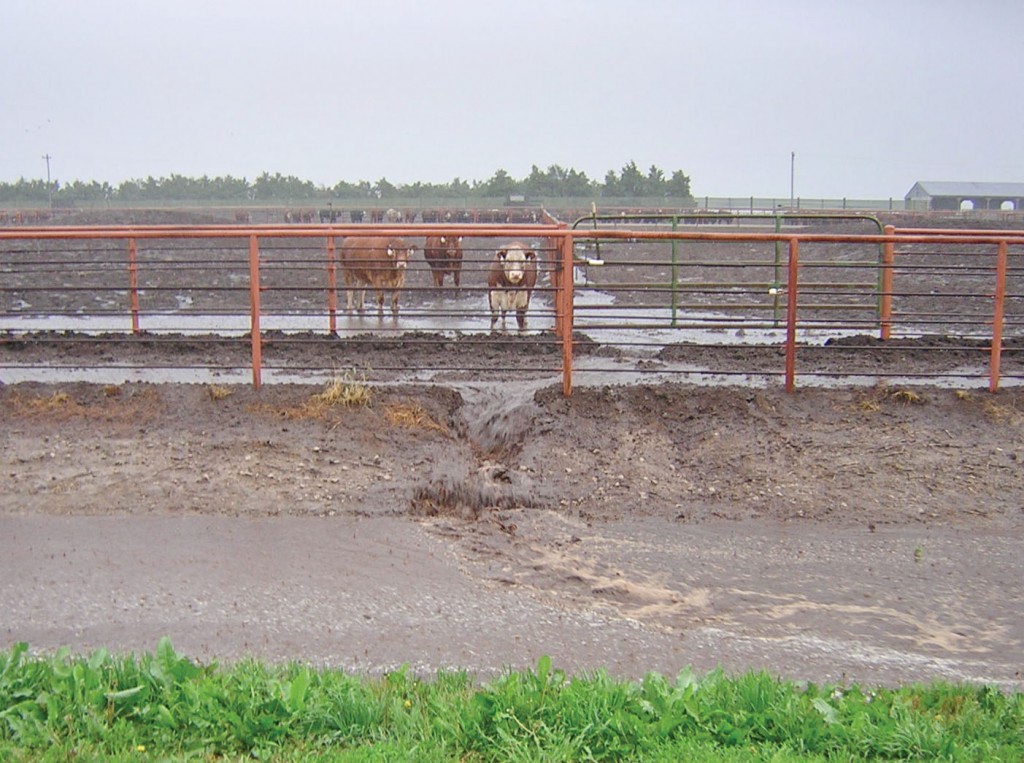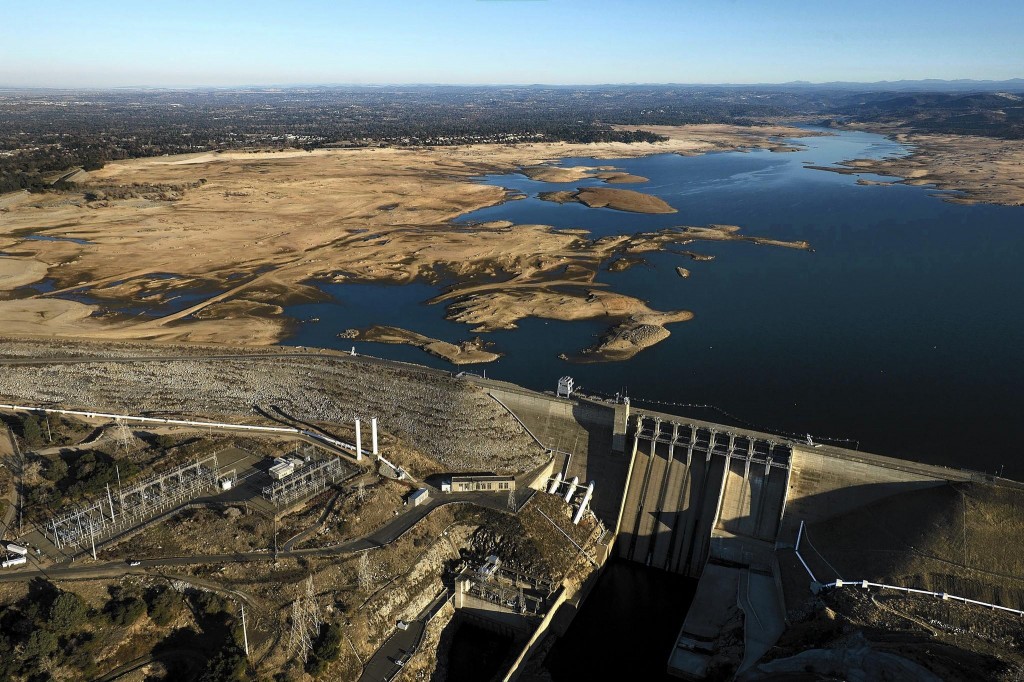What’s the role of factory farming in ocean degradation?
February 12, 2015
By Brett Garling
We often forget that our actions on land always affect the ocean. The effects can be positive; for example, by banning plastic bags, municipalities are helping reduce the roughly 20 billion pounds of plastic that enter the ocean every year. That’s great news and the deplastification movement is thankfully picking up steam. Yet, we also continue practices on land that greatly harm the ocean. The destruction, however, largely happens out of sight and out of mind. For example, industrial animal agriculture is seriously impacting our waterways and ocean yet few people know it. Yes the treatment of the animals is ghastly – and that is reason enough to avoid purchasing factory farmed meat – but there is also an impact on the ocean. Let’s explore three ways industrial animal agriculture negatively affects the ocean:
1) Farm waste doesn’t stay on farms…

To the gardener, a little bit of manure is a natural part of the nutrient cycle. This beneficial view of animal waste, however, breaks down when industrial farming methods are considered. For one, animals are fed an endless stream of antibiotics and hormones, which are excreted and end up in our waterways and ocean. And even if the manure were from a strict grass-fed diet, there is still a problem: the scale on which factory farms produce animal waste creates nitrogen shocks to the environment, encouraging disease outbreak and destructive algae blooms. What is the result of all this on the ocean? Here are a few examples from the NRDC:
++ Huge open-air waste lagoons, often as big as several football fields, are prone to leaks and spills. In 1995 an eight-acre hog waste lagoon in North Carolina burst, spilling 25 million gallons of manure into the New River. The spill killed about 10 million fish and closed 364,000 acres of coastal wetlands to shellfishing.
++ Runoff of chicken and hog waste from factory farms in Maryland and North Carolina is believed to have contributed to outbreaks of Pfiesteria piscicida, killing millions of fish and causing skin irritation, short-term memory loss and other cognitive problems in local people.
++ Nutrients in animal waste cause algal blooms, which use up oxygen in the water, contributing to a “dead zone” in the Gulf of Mexico where there’s not enough oxygen to support aquatic life. The dead zone fluctuates in size each year, extending a record 8,500 square miles during the summer of 2002 and stretching over 7,700 square miles during the summer of 2010.
++ Ammonia, a toxic form of nitrogen released in gas form during waste disposal, can be carried more than 300 miles through the air before being dumped back onto the ground or into the water, where it causes algal blooms and fish kills.
2) Industrial animal agriculture contributes directly to sea temperature rise and ocean acidification

How could pigs in North Carolina kill corals in the Coral Sea? It’s pretty simple really. According to the Food and Agricultural Organization of the United Nations, animal agriculture is responsible for 18 percent of greenhouse gas emissions – more than all transportation combined. As a primary driver of global warming – more than cars – animal agriculture is directly affecting the global ocean in two ways. First, the rising atmospheric temperature is raising global ocean temperatures leading to widespread coral bleaching. (Bleaching slows coral growth, makes them susceptible to disease, and leads to large-scale reef die-off). Second, a greater concentration of carbon dioxide in the atmosphere is increasing the acidity of the global ocean, handicapping the extensive roster of marine organisms that build shells or skeletons.
3) Industrial animal agriculture hogs fresh water

Industrial animal agriculture is very water intensive. The US Environmental Protection Agency (EPA) points out that one hamburger requires 660 gallons of water to produce – the equivalent of 2 months worth of showers. Then, consider the estimation that the meat and dairy industries combined use nearly 1/3 (29%) of all the fresh water in the world today. Essentially, the once-fresh inputs of clean, natural water into the ocean are being replaced by flows of polluted farm runoff. And on a massive scale. It’s no wonder that animal agriculture is the leading cause of species extinction, ocean dead zones, water pollution and habitat destruction, according to the EPA.
What can we do in the face of such large-scale destructive practices that harm the ocean? (Not to mention, harm ourselves through consumption of contaminated meat and water?) Simple: eat less meat and dairy. When you do, eat local sustainably-raised meat and dairy. And tell your friends to do the same!









For people who haven’t yet, please check out Cowspiracy for a real eye opener in why you should not be supporting animal agriculture, using simple math looking at just how unsustainable animal agriculture is in any form: http://www.cowspiracy.com/
and then please consider going vegan if you’re looking to do your part as a human (we are herbivores naturally as it is anyway) sharing this earth!
eat less meat/dairy? No, the solution would be to go vegan. We are herbivores anyway.
There is no “sustainable” form of animal agriculture by default given the ever rising population of humans. Just watch Cowspiracy for the simple math behind this truth.
agreed 100%
It is desperate, urgent times for our oceans and all life on earth. Please consider going vegan! Time is running out and future generations are counting on us! Please!
Here in Australia the Queensland government bought out a cattle station that is playing a huge role in the degradation of our (once) beautiful Great Barrier Reef. The hope is that by rehabilitating that one area it will almost halve the sediment running into the reef. Just shows how much livestock farming totally erodes the land. Good on them for doing something about it though.
Please watch Cowspiracy, there is no such thing as “sustainably-raised meat and dairy.” Also this article does not even raise the issue of human overpopulation and how it affects the oceans.
What about N2O?
have you any analisis of the effects of that?
Sickening! I am a scuba diver and although I am not a vegetarian, never eat beef and rarely eat pork, I plan on eating a lot less meat now that I know this….why isn’t this information posted everywhere? Lobbyists control our governments!
They don’t want us to know, too much money goes around in animal agriculture. Try a plant-based diet, because producing cheese and dairy is the same business. For just one sandwich there comes with it 2 1/2 cups of manure, for example.
A vegan diet is better for your health, for the planet, for the animals and to feed more people.
Chickens are arguably the most abused animals on the planet. In the United States, approximately 9 billion chickens are killed for their flesh each year, and 305 million hens are used for their eggs. The vast majority of these animals spend their lives in total confinement—from the moment they hatch until the day they are killed.
More chickens are raised and killed for food than all other land animals combined, yet not a single federal law protects them from abuse—even though most Americans say that they would support such a law.
Chicks
Every year in the United States, 9 billion chickens raised for their flesh and 305 million chickens raised for their eggs begin their lives when they hatch along with thousands of other chicks inside giant incubators. Only a few days after birth, they’re crammed into shipping crates and sent to factory farms. They will never meet their parents.